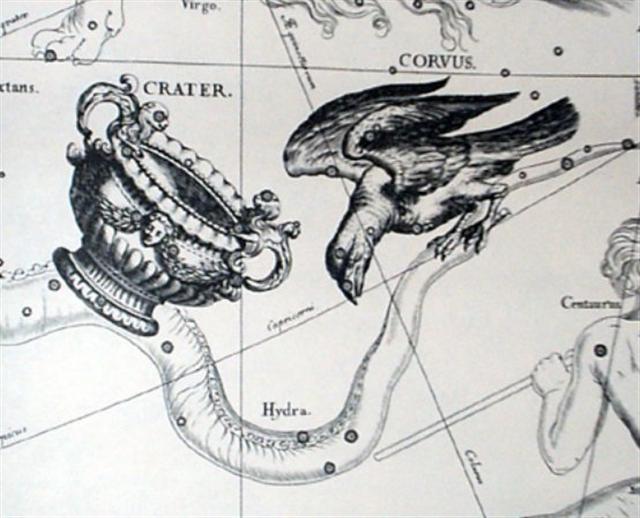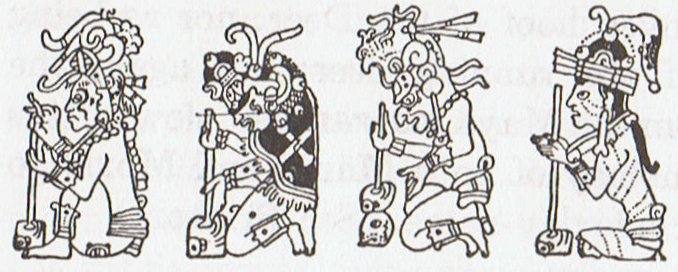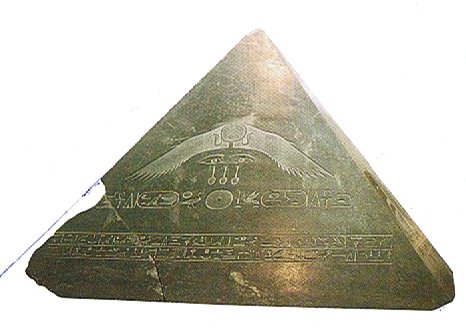I
have decided the
proper way to
present this part of
the text should be
as follows below, with
both the heliacal
and the nakshatra
views and with time
counted according to
the Hyades Gate, to
the time of
rongorongo, and to
the time of Julius
Caesar.

By
finding
the
Raven
stars
close to
the Full
Moon in
the
night
the
Easter
Islanders
would
have
known
the Sun
was at
the
Phoenix:
 |
 |
 |
 |
| Gb7-1 (182) |
Gb7-2 |
Gb7-3 (413) |
Gb7-4 |
|
JANUARY 19 (384) |
20 |
21 |
22 |
| σ Andromedae (3.0), ι Ceti (3.3), ζ Tucanae (3.5), ρ Andromedae, π Tucanae (3.7) |
no star listed (4) |
Ankaa, κ Phoenicis (5.0) Alphard
|
λ Phoenicis (6.3), β Tucanae (6.4) |
| March 24 |
25 (84) |
26 (450) |
27 |
| 'February 25 |
26 (422) |
27 |
28 (59) |
| NAKSHATRA DATES: |
| JULY 21 |
7-22 |
23 (204) |
24 |
| Chang Sha (186.3) |
Intrometida (187.4), Acrux (187.5) |
γ Com. Berenicis (188.0), σ Centauri (188.1), Algorab (188.5), Gacrux (188.7) |
γ Muscae (189.0), Avis Satyra (189.3), Asterion (189.5), Kraz (189.7) |
| September 23 |
24 |
25 (268) |
26 |
| 'August 27 |
28 (240) |
29 (*108) |
30 |
| CORVUS: |
| 13 |
Hasta |
α, β, γ, δ, ε Corvi |
Hand or fist |
185 = 178 + 7 |
| the hand |
Gienah |
Sept 22 (265) |


North of
the
equator
the Sun
at the
Phoenix
meant a
new year
was
dawning,
and the
precession
had pushed
this date
further
and
further
ahead in
the Sun
calendar.
South of
the
equator,
on the
other
hand, it
was the
conjunction
between
Raven
and Sun
which
appeared
to cause
dawn. In
order to
avoid
confusion
it was
therefore
better
to say
that the
southern
spring
arrived
when the
Phoenix
was at
the Full
Moon and
that
summer
was
ending
when the
Full
Moon
reached the
Raven.
This way
the
ancient
meanings
of the
star
figures
could be
kept
intact.
The Sun
ruled
north of
the
equator
and the
Full
Moon
(Hotu)
in the
southern
hemisphere.
North of
the
equator
- where
once
upon a
time the
star
figures
had beed
created
- Raven
was
where
the
first
half of
the year
was
ending,
where
the Hand
at the
horizon
in the
west
took
care of
the Sun.
In the
land of
the
Mayas
darkness
would
fall
until once
again
light
would be
rekindled
in the
sky.
| Egyptian hand |
 |
Phoenician kaph |
 |
Greek kappa |
Κ (κ) |
|
Kaph is thought to have been derived from a pictogram of a hand (in both modern Arabic and modern Hebrew, kaph means palm/grip) ...
... The manik, with the tzab, or serpent's rattles as prefix, runs across Madrid tz. 22 , the figures in the pictures all holding the rattle; it runs across the hunting scenes of Madrid tz. 61, 62, and finally appears in all four clauses of tz. 175, the so-called 'baptism' tzolkin. It seems impossible, with all this, to avoid assigning the value of grasping or receiving. But in the final confirmation, we have the direct evidence of the signs for East and West. For the East we have the glyph Ahau-Kin, the Lord Sun, the Lord of Day; for the West we have Manik-Kin, exactly corresponding to the term Chikin, the biting or eating of the Sun, seizing it in the mouth.

 
The pictures (from Gates) show east, north, west, and south; respectively (the lower two glyphs) 'Lord' (Ahau) and 'grasp' (Manik). Manik was the 7th day sign of the 20 and Ahau the last ... |
At the
time of
the
Hyades
Gate the
star ε
Phoenicis
rose
heliacally 301 days
after 0h
and
Ankaa (α)
6 days
later:
... But,
whether
Bayer
knew it
or not,
his
title
[Phoenix
for the
constellation]
is an
appropriate
one, for
with
various
early
nations
- at all
events,
in
China,
Egypt,
India,
and
Persia -
this
bird has
been 'an
astronomical
symbol
of
cyclic
periods',
some
versions
of the
well-known
fable
making
its life
coincident
with the
Great
Year of
the
ancients
beginning
at noon
of the
day when
the sun
entered
among
the
stars of
Aries;
and, in
Egypt,
with the
Sothic
Period
when the
sun and
Sirius
rose
together
on the
20th of
July
...
 |
 |
 |
 |
| Gb6-25 |
Gb6-26 (408) |
Gb6-27 |
Gb6-28 (181) |
|
JANUARY 15 (*300) |
16 |
17 |
18 (383) |
| θ Oct. (364.9) |
Al Fargh al Thāni-25 |
Uttara Bhādrapadā-27 / Wall-14 |
χ Pegasi (2.1), θ Andromedae (2.7) |
| 0h (365.25) |
| Caph, SIRRAH (0.5), ε Phoenicis, γł Oct. (0.8) |
ο Oct. (1.3), ALGENIB PEGASI (1.8) |
|
March 20 (444) |
0h |
22 |
23 (82) |
|
'February
21 (52) |
22 |
Terminalia |
24 (420) |
|
NAKSHATRA
DATES: |
|
JULY
17 |
18 |
19 (200) |
20 (*121) |
|
12h
(182.6) |
Alchita, Ma Wei (183.1), Minkar (183.7), ρ Centauri (183.9) |
Pálida (184.6), Megrez (184.9) |
Hasta-13 / Chariot-28 |
|
ο
Virginis
(182.1),
η
Crucis
(182.5) |
GIENAH (185.1), ε Muscae (185.2), ζ Crucis (185.4), Zaniah (185.9) |
|
September19 |
20 |
21 (264) |
Equinox |
|
'August
23 |
24 (236) |
25 (*157) |
26 |
At the
time of
rongorongo
the Sun
was
rising
with
Alchita
(α Corvi
at the
beak of
the
Raven)
in
September
20 and
this was 62 days
later
than the
Egyptian
key date
JULY 20
(201).
On
Easter
Island
they
knew γ
(Gienah)
would be
at the
Sun 2
days
later
than
Alchita
- at
their
spring
equinox.
Because
the 3
stars θ,
σ, and
ρ, at
the
right
arm of
Andromeda
would
then
be
close to
the Full
Moon:

| Egyptian nfr |
 |
Phoenician teth |
 |
Greek theta |
Θ (θ) |
|
... The form of the letter θ suggests a midline ('waist'), although the origin of θ is the Phoenician tēth which means 'wheel'. This in turn could have originated from a glyph named 'good' which in Egypt was nfr ...
... θ is the last star in the Ara constellation, and the ancient meaning of this letter was described as a wheel by the Phoenicians but for the Egyptian it meant 'good'. When the wheel of time has come full cycle around and the upside down fire-altar is in the past the times ahead should be good (or lucky Sa'ad) ...
According to Wilkinson nefer originally depicted the throat and heart of a sheep:


|
| Egyptian tusk |
 |
Phoenician shin |
 |
Greek sigma |
Σ (σ, ς) |
|
Wikipedia: Shin (also spelled Šin (šīn) or Sheen) literally means 'teeth, 'press', and 'sharp' ...
The symbol Σ is currently used as an expression for 'sum'. The Phoenician shin is oriented in another way, similar to how Cassiopeia is read in the night when in a low position - as Celestial W when below the pole, in contrast to the Celestial M when above it.
Greek sigma therefore resembles Cassiopeia in between, when she was in the west at the time when the Sun was rising in the east.

|
| Sumerian SAG |
 |
Phoenician resh |
 |
Greek rho |
Ρ (ρ) |
|
... Resh (Arabic: rāۥ) is the twentieth letter of many Semitic alphabets, including Phoenician, Aramaic, Hebrew ... The word resh is usually assumed to have come from a pictogram of a head, ultimately reflecting Proto-Semitic *raۥ(i)š-. The word's East Semitic cognate, rēš-, was one possible phonetic reading of the Sumerian cuneiform sign for 'head' (SAG).

.jpg)
|
|











.jpg)